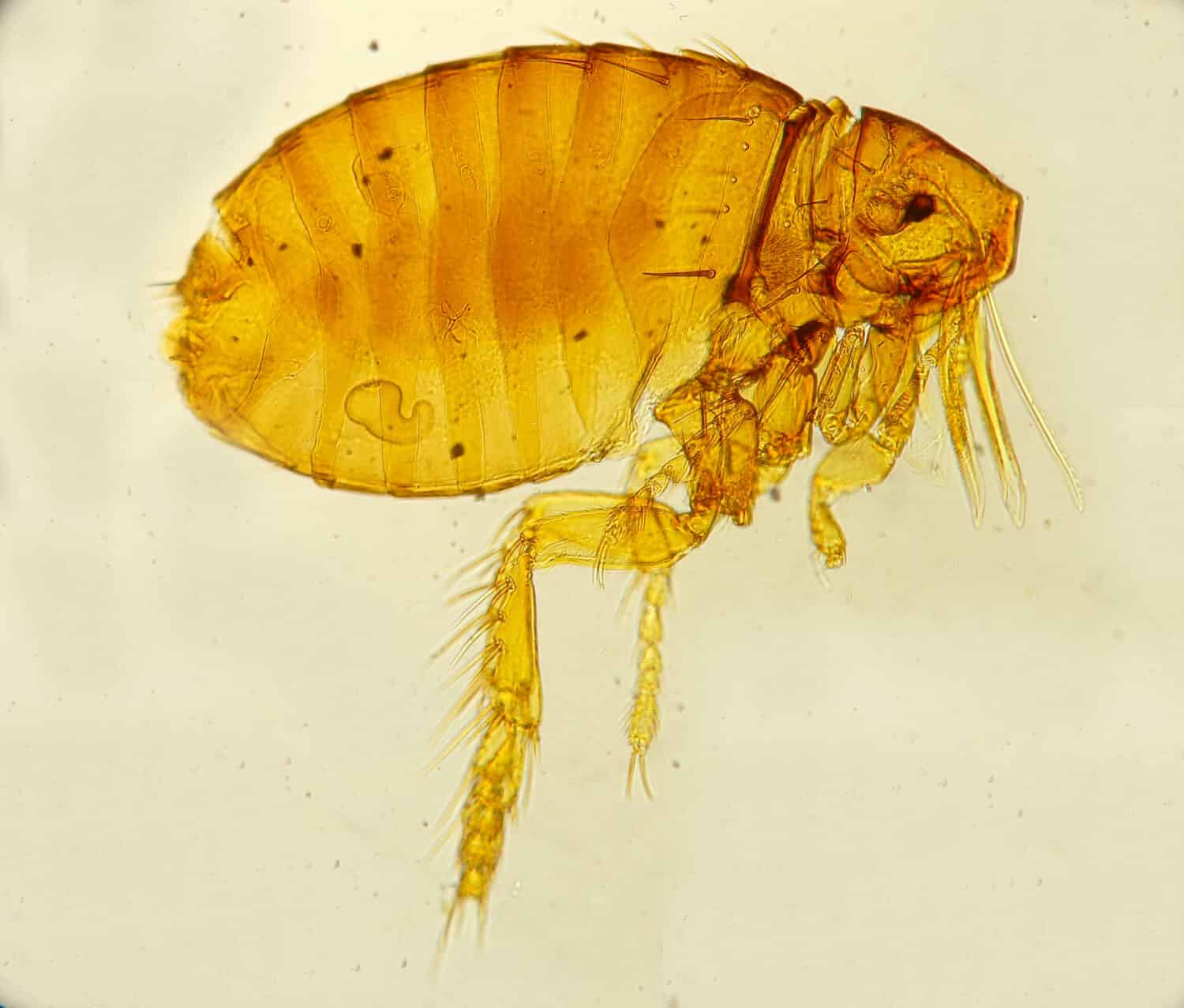If you’ve noticed a few fleas creeping about your carpet, you may be freaking out. Thankfully, there are many natural treatments that will kick those fleas to the curb! After all, these creepy crawlers can spread diseases.
Below you will find multiple natural methods for getting rid of fleas in carpets, including their pesky eggs.
How Do Fleas Get on My Carpet?

Fleas can be extremely hard to see with the naked eye.
©Paolo Cordoni/iStock via Getty Images
Fleas come into your home via your furry friends. They can lay up to 50 eggs a day on cats and dogs! The eggs drop into carpets and floor gaps as domestic animals move about.
Larvae are hard to get out after hatching because they become deeply ingrained in pet bedding and fibers of carpet. The dried blood and excrement of the adult fleas on the host are what flea larvae feed on as they hide out in carpet for months at a time.
Fleas love to hide out in carpets with a high pile. The bugs may jump up to seven inches off the ground in search of hosts. Fleas in the carpeting can thrive because of the exoskeletons’ crush resistance when they are walked on.
How to Get Rid of Fleas Naturally
1. Vacuuming
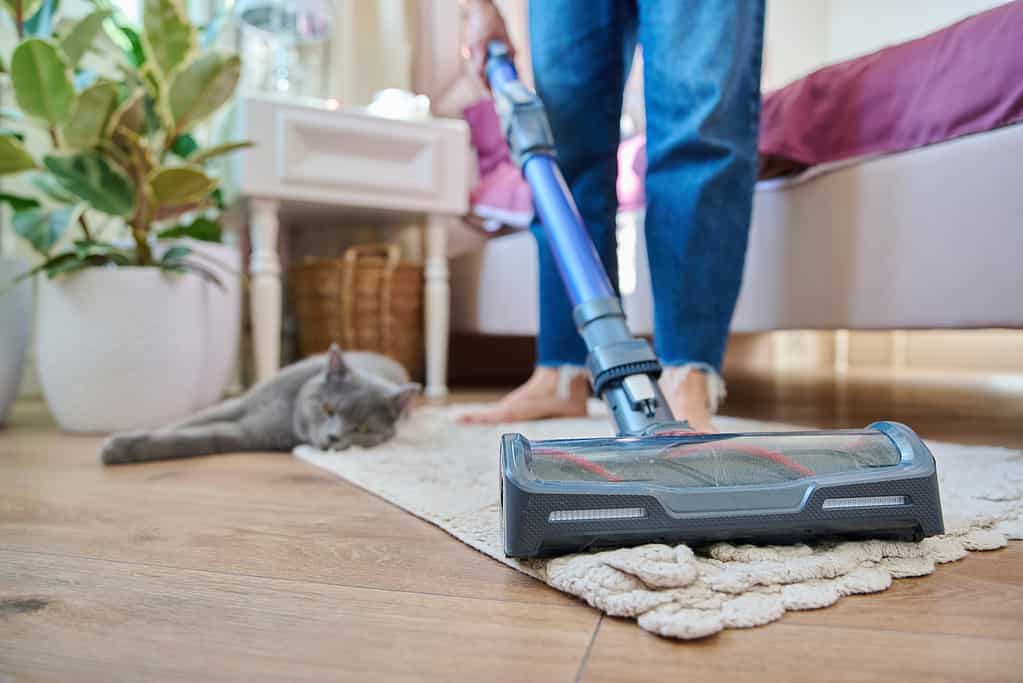
Always clean your vacuum after sucking up fleas.
©Valeriy_G/iStock via Getty Images
We’ll go over the natural methods next, but first, what should you do to start the process? Vacuuming is a must before cleaning carpets for fleas. Doing this helps to suck up any eggs deep within the fibers of the carpet.
It’s important to use attachments, such as the nozzle, to get into cracks and crevices where they could be hiding. Don’t forget to vacuum underneath the furniture. Fleas love living in dark places that could be easily overlooked.
On that note, vacuum the furniture itself! Any fleas or flea eggs you find should be carefully sucked up using your vacuum’s hose adapter. Make care to vacuum every piece of furniture’s base and underside as well.
Remove cushions, wash the covers if possible, and vacuum anywhere you can. Since these minuscule critters hang out on pets, don’t forget to clean the pet’s bed, crate, clothes, collars, cat towers, and the like.
If your vacuum uses disposable bags, remove it, place it in a closed plastic bag, and dispose of it outside your home. This will stop any fleas that may still be inside your house and wreaking havoc all over again.
If your vacuum simply uses a canister, take it outside and dump the contents into a plastic bag. Put the bag in the trash can before washing the canister with hot, soapy water. This is a quick and straightforward way to get rid of fleas naturally.
2. Steam Your Carpets
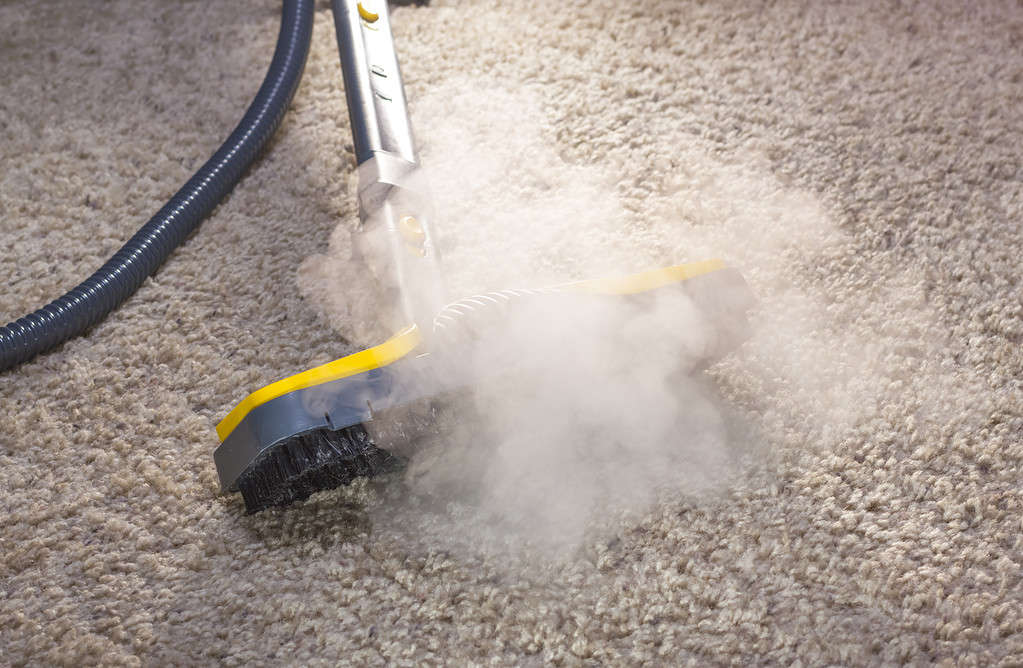
Steaming your carpets regularly can help keep them sanitized.
©snyferok/iStock via Getty Images
Care for your furniture and carpets by steam cleaning. If you don’t own one, you can easily rent a steamer from a hardware store. Wash all of your carpets completely by carefully following the equipment’s directions.
Hiring a steam cleaning company to do the job for you is a further option. Both eggs and mature fleas will be killed by the steam cleaner’s extreme temperatures. To determine whether the steam will leave marks on the carpet, be sure that you try the steam cleaner on an unnoticed part of the carpet beforehand.
3. Diatomaceous Earth

Diatomaceous earth can kill a wide variety of pests, including spiders!
©FotoHelin/Shutterstock.com
To get rid of fleas, apply food-grade diatomaceous earth on the floor coverings. Diatomaceous earth, which is derived from microscopic fossilized algae, will effectively sever the fleas in two and destroy them.
Spread it on your carpet and next to any doors or windows where fleas may be entering your home. Allow it to sit for two to three days. Pets and young children should stay off carpeting in the meantime.
After it’s been a couple of days, vacuum up what remains. You can repeat this on any bedding or surfaces you believe fleas could be lurking. Just make sure that people and pets don’t use the areas until you’ve vacuumed.
Diatomaceous earth has a gritty consistency that can destroy conventional, filtered, and bagged vacuums. As an alternative, utilize a shop vac or a vacuum with a HEPA filter.
4. Salt or Baking Soda
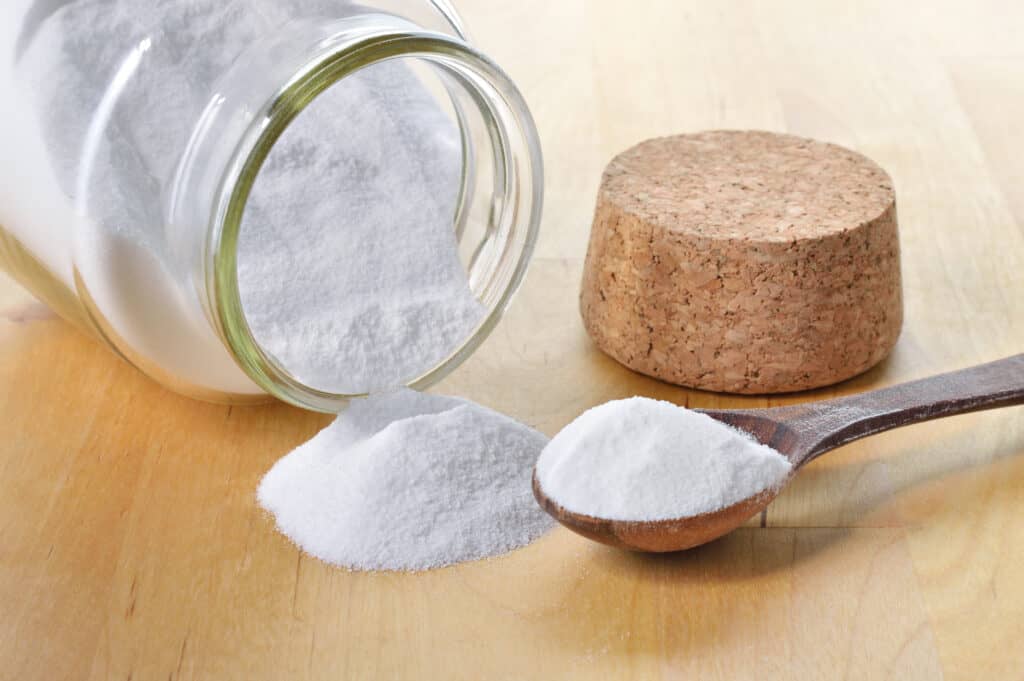
Baking soda can be used to kill rats and ants in addition to fleas.
©Geo-grafika/Shutterstock.com
You likely have what you need for this next method in your pantry. Spread baking soda or salt across the carpet. Fleas are capable of being killed by the drying effects of these common household ingredients.
The carpet in your home, the areas where the dog or cat likes to curl up, the areas around doorways, and under furniture should all be treated. Similar to DE, the salt or baking soda needs to sit for 24 to 48 hours before you vacuum it.
The finer the grain of salt you use, the better the outcome you can expect. Pets and young children should be kept out of the vicinity until the salt or baking soda has been vacuumed up. It’s not uncommon for homeowners to need to use this treatment method twice to see results.
5. Vinegar and Water
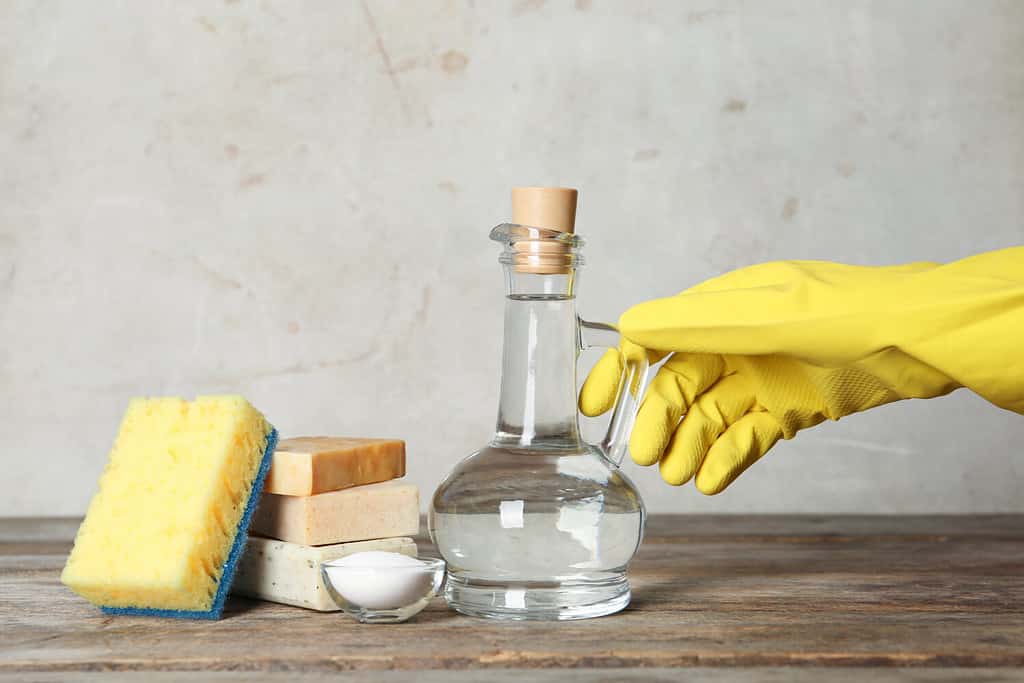
Be careful of using vinegar near cats since they despise the smell.
©New Africa/Shutterstock.com
Vinegar has an unpleasant smell, and it can be used to kill mature fleas. Can we blame them? Apply a solution of vinegar and water with a sprayer. Fill a spray bottle with a mixture of vinegar and water; shake vigorously to combine.
For this combo, you can use either white vinegar or apple cider vinegar. Once you have the equal parts mixed together, it’s time to spray it all over your carpets, furniture, and linens. Give special attention to any areas where your pet likes to hang out.
Spray beneath furniture, close to entryways, and on baseboards as well.
6. Lemon Water
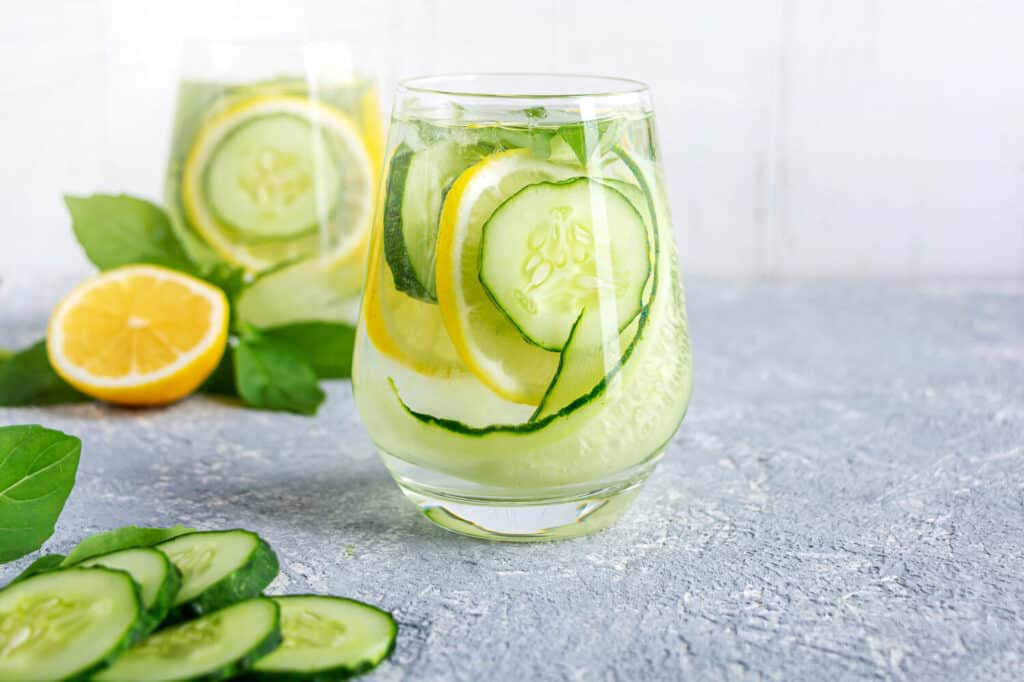
You can add herbs and essential oils that deter fleas to the lemon water.
©FamStudio/Shutterstock.com
If you’re not a fan of the smell of vinegar all over your home, consider using this alternative! The fragrance of lemon repels fleas. Lemon rinds also have essential oils that have a natural flea-repelling effect.
Lemon water can be sprayed as a natural deterrent. Slice one to three lemons into small rounds, then add the pieces to a stovetop pot. After that, add two cups of water and bring the mixture to a boil.
Remove the saucepan from the flame after the water starts to boil, then turn the heat off. The lemons should be left in the water overnight. Fill a spray bottle with the lemon water and sprinkle it on the carpet the following day.
Instead of killing fleas, this blend is likely to keep them from entering the carpeting in your home. To make sure the fleas are gone, vacuum the area once the carpet has dried.
7. Boric Acid
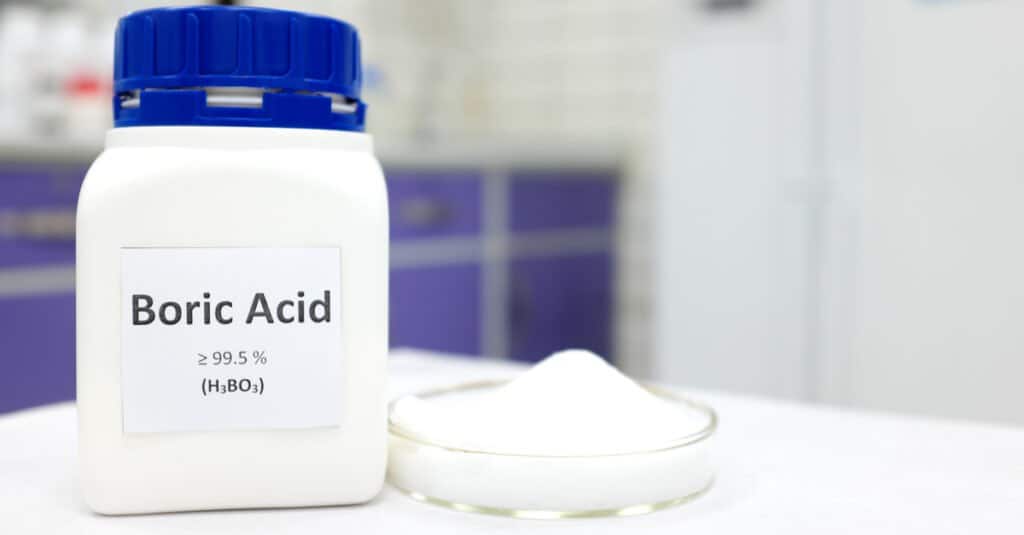
Many people use boric acid to kill cockroaches and fleas.
©sulit.photos/Shutterstock.com
Use a face mask that’s disposable and a pair of rubber gloves when working with boric acid to safeguard yourself. Boric acid can be used to kill fleas. You can likely find this ingredient at your neighborhood gardening and home supply store.
Spread a thin layer of boric acid across the carpet and in the vicinity of any potential flea entry points. After allowing it to remain on the carpet for two to three hours. Once this time has passed, vacuum up what remains.
Like with other natural remedies on this list, keep pets and children out of the area until you vacuum.
8. Essential Oils

Lavender essential oil is great for those who have trouble sleeping.
©iStock.com/Olivka888
Use essential oil insecticides to get rid of fleas. Some essential oils are effective at eliminating or deterring fleas. Fleas respond well to the scents of peppermint, lavender, and lemongrass specifically.
To avoid harming pets, only apply essential oils that have been specifically formulated to act as insecticides. These frequently come in spray form, which you apply to the carpet. Sprinkle the essential oil insecticide near doors and windows as well to deter fleas from entering your home.
9. Utilize House Plants
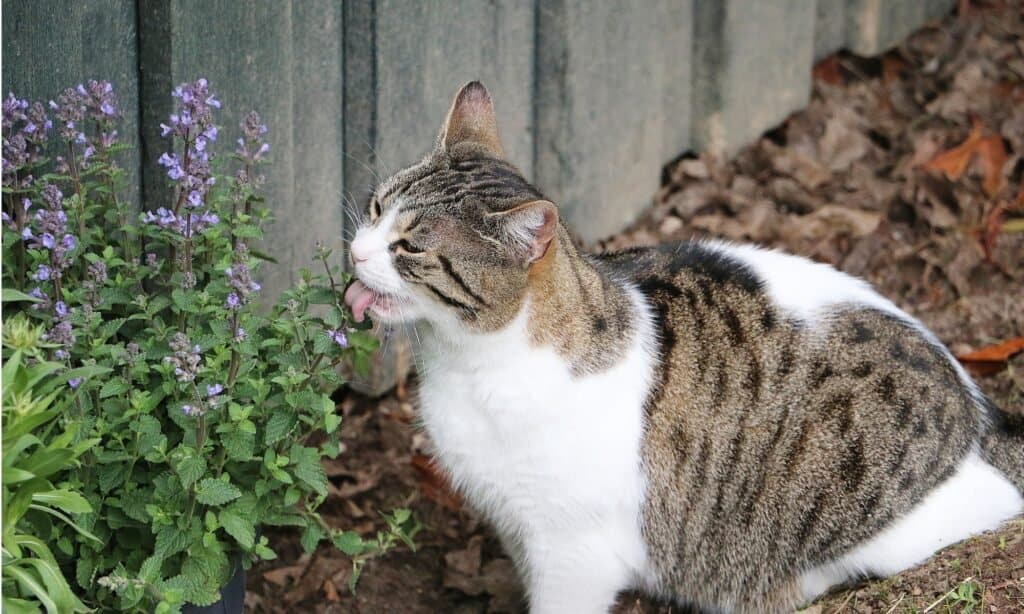
Planting catnip inside can keep your cat happy and keep fleas at bay.
©iStock.com/BiancaGrueneberg
Use plants like rosemary and others to ward off pests. Due to their fragrances, several plants can ward off fleas. Fleas won’t be killed by these plants, but they will be deterred from entering your house.
Additionally, they are typically safe around pets. Get a plant that repels fleas and keep it within your house. The following plants are repulsive to fleas: catnip, rosemary, lemongrass, and lavender.
Summary of Ways to Get Rid of Fleas Naturally
| Order | Cleaning method |
|---|---|
| 1 | Vacuuming will get any hidden flea eggs. |
| 2 | Steaming carpets will kill any remaining fleas. |
| 3 | Diatomaceous earth to slowly get rid of fleas. |
| 4 | Salt or baking soda is something you have easy access to and will kill fleas. |
| 5 | Vinegar and water will kill fleas and sanitize the area. Remember vinegar can bleach. |
| 6 | Lemon water is a great option for those with cats that want to avoid strong aromas. |
| 7 | Boric acid is preferred for people with other creatures they want to eliminate. |
| 8 | Essential oils can kill fleas and make your home smell good. |
| 9 | House plants keep fleas away and add a bit of nature to your home. |
Thank you for reading! Have some feedback for us? Contact the AZ Animals editorial team.

